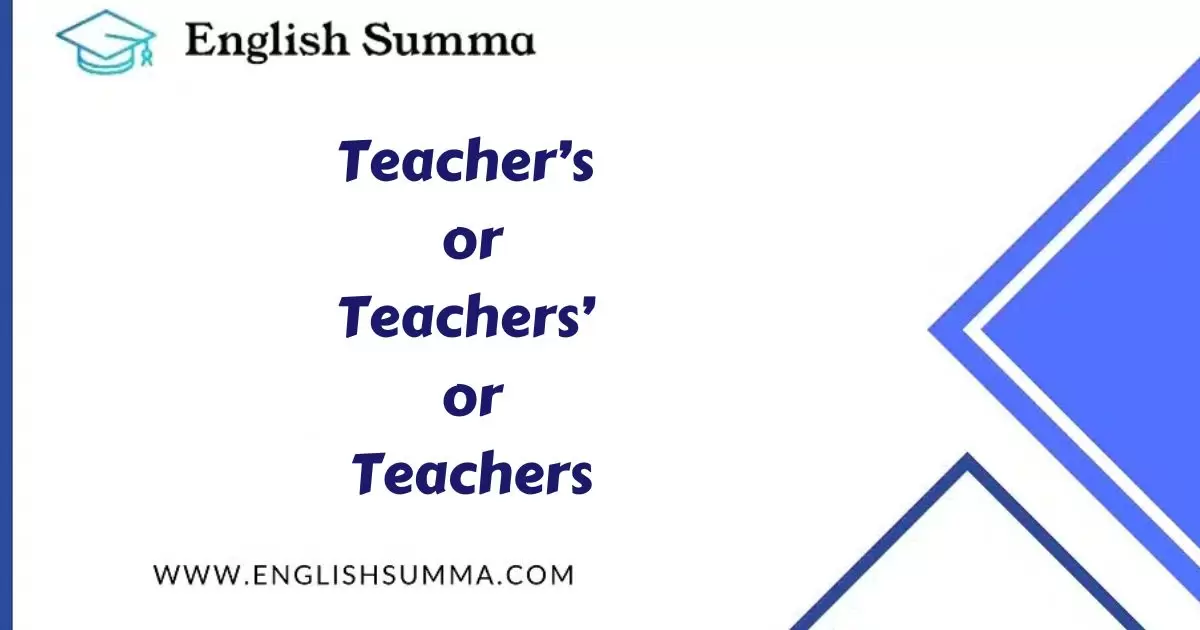In the realm of English grammar, the apostrophe holds a significant role, especially when it comes to indicating possession. The subtle placement of this punctuation mark can drastically alter the meaning of a word or phrase.
One common area of confusion lies in discerning between teacher’s, teachers’, and teachers. Each form represents a distinct usage, conveying ownership or plurality in varying contexts. Let’s delve into each scenario to grasp their nuances effectively.
Teacher’s: Singular Possession
The term teacher’s denotes singular possession, attributing something to a single educator. In this context, the apostrophe followed by an ‘s’ indicates that the subsequent noun belongs to or is associated with a sole teacher. Consider the following examples:
- The teacher’s classroom was adorned with colorful posters.
- Ms. Smith’s dedication to her students is admirable.
- The teacher’s passion for literature inspired her students.
In these instances, teacher’s indicates possession by one specific teacher. It’s crucial to note that the apostrophe-s construction typically implies ownership or association with a singular noun.
Teachers’: Plural Possession
Conversely, teachers’ signifies possession by multiple teachers. The placement of the apostrophe after the ‘s’ in teachers’ indicates that the subsequent noun is shared or associated among a group of educators. Here are some examples illustrating this usage:
- The teachers’ lounge is a space for faculty to unwind.
- The teachers’ dedication to their profession is commendable.
- The teachers’ collaborative efforts enhance student learning experiences.
In these instances, teachers’ highlights possession by a collective group of teachers, reinforcing the plural nature of ownership.
Teachers: Plural Form Without Possession
Lastly, teachers without an apostrophe serves as the simple plural form of the word, referring to more than one educator without indicating possession. This usage is straightforward and does not involve ownership or association. Consider the following examples:
- Teachers play a vital role in shaping young minds.
- The teachers gathered for a meeting after school.
- Teachers undergo continuous professional development.
In these sentences, teachers refers to educators in general, without implying any possession or association.
Conclusion
In conclusion, understanding the distinctions between teacher’s, teachers’, and teachers is essential for clear and effective communication in written and spoken English. The apostrophe and its placement serve as crucial indicators of possession and plurality, shaping the meaning of sentences.
By mastering these nuances, writers and speakers can convey their intended messages accurately and concisely, enriching their language proficiency.
Related Pos:

